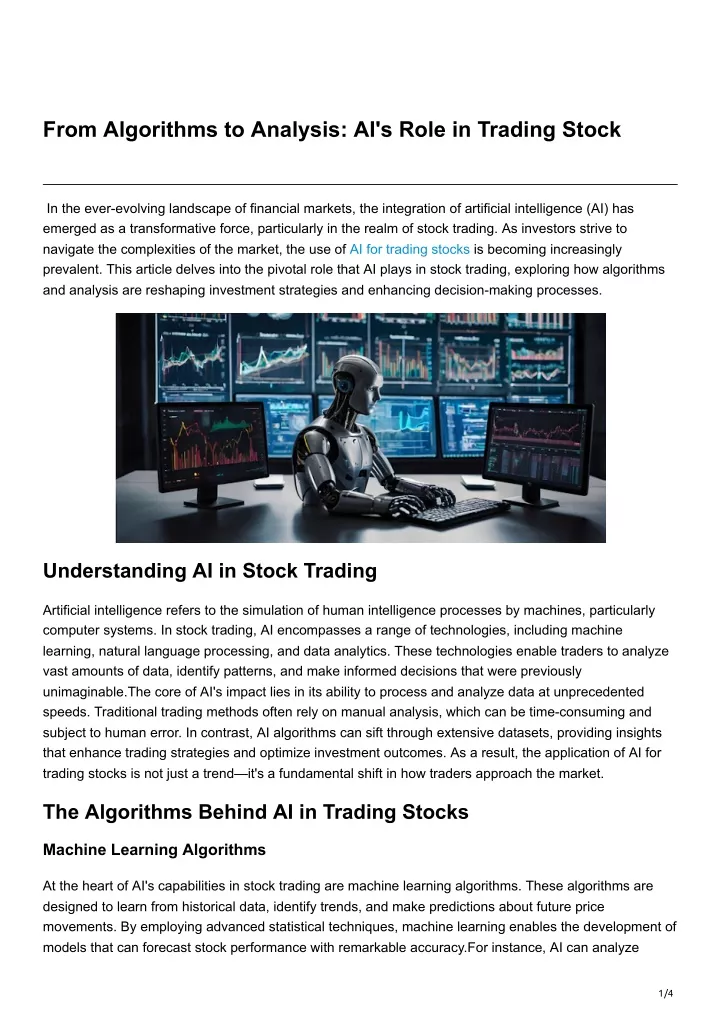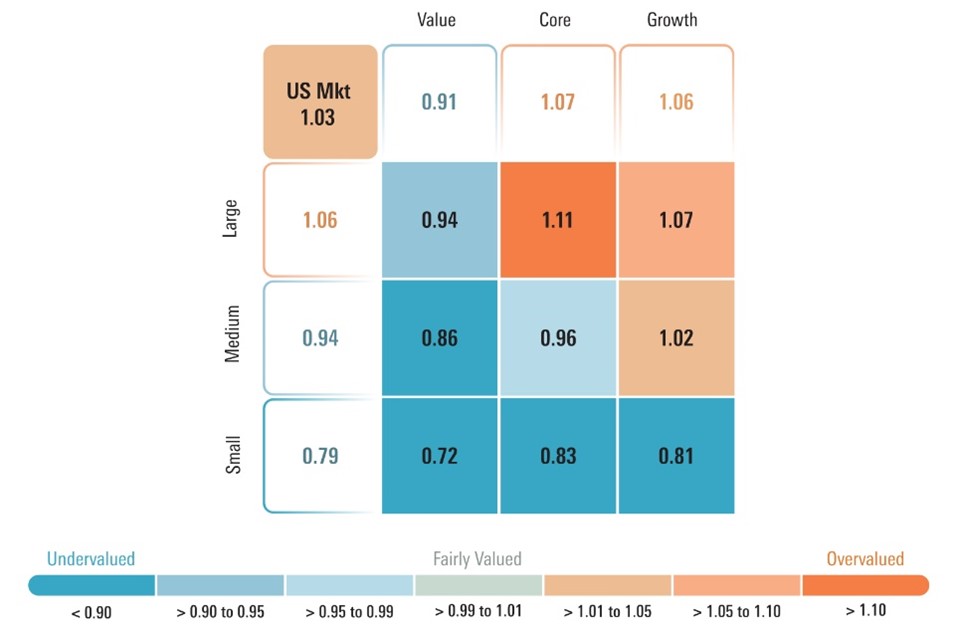Strategy customization is a key feature of AI stock Predicting/Analyzing trading platforms which allows traders to adapt the platform to their specific trading goals as well as their risk tolerance and market conditions. A platform that has flexible options for customization can dramatically improve the efficiency of your trading. These are the best 10 ways to determine the capacity of platforms to tailor their strategies:
1. Evaluate Pre-Built Strategy Templates
Variety of templates: Check whether the platform provides a range of pre-built strategies to suit different styles of trading (e.g. day trading, swing trading, and long-term investing).
The user's experience is an excellent indicator.
Performance history: Check whether the platform has historical performance information on a pre-built strategy.
2. Assessment Custom Strategy
Drag-and drop tools: Search for platforms with intuitive drag-and-drop interfaces for creating customized strategies.
Look into the options for coding on the platform. For advanced users, it may be beneficial to use custom scripting languages (e.g. Python or R).
Flexibility. Be sure to define the key elements like risks management parameters, entry/exit regulations, and any other elements that make up your strategy.
3. Check for Backtesting Capabilities
Historical data. Check if the platform can provide enough historical data to backtest your strategy.
Customizable parameters - Ensure that you have the ability to change parameters (e.g. timeframes, indicator) while back-testing.
Performance metrics: Verify whether the platform provides specific performance metrics that can be used to backtest strategies (e.g. win rate Sharpe ratio drawdown, etc.).
4. Evaluate Real-Time Strategy Testing
Paper trading: Check if the platform supports simulation and paper trading modes for testing strategies in real-time without risking your capital.
Live testing is a great way to check if your strategy can be tested in the market in tiny amounts.
Real-time Adjustments: Determine if you're able to adjust your settings in real time according to the market's conditions.
5. Assess integration with technical indicators
Libraries for indicators: Make sure the platform has a full library of technical tools (e.g. MACD, RSI and moving averages).
Custom indicators: Make sure you have the ability to create or import custom indicators to incorporate into your strategies.
Examine the combinations of indicators.
6. Check for Risk Management Tools
Stop-loss/take-profit: Ensure the platform allows you to set stop-loss and take-profit levels within your strategies.
Position sizing: Find out if you are able to define rules for position sizing (e.g. an amount fixed or a percentage of portfolio) in order to manage the risk.
Risk-reward ratio: Check whether the platform can set risk-reward ratios for specific trades or strategies.
7. Evaluate Multi-Asset Strategy Support
Asset classes: Verify that the platform has strategies that can be used for multiple asset classes.
Strategies that cross assets: You could develop strategies that incorporate various asset types (e.g. pair trading, hedges).
Market coverage: Ensure that the platform you're interested in is covered by the markets that interest you (e.g. US or international cryptocurrencies, copyright).
8. Assess Automation & Execution
Automated trading. Ensure the platform supports automated execution that is based on predefined strategies.
Types of orders - Make sure that the platform supports a range of order types for execution strategies (e.g. stop, limit or market).
Latency: Make sure that the platform is running at low latency when trading, especially if employ high-frequency strategies.
9. Check for Strategy Optimizing Tools
Parameter Optimization: Make sure whether the platform provides tools to optimize the parameters of strategies (e.g. genetic algorithms grid search, genetic algorithms).
Machine learning integration: Determine if the platform integrates machine learning in order to refine and enhance strategies.
Scenario Analysis: Determine if the platform supports testing strategies in different market scenarios (e.g. bull, bear or volatile).
Review Community Feedback and User Feedback
User feedback: Use user reviews to determine the effectiveness of the platform to tailor strategies.
Forums for community members Find out if there is an active user community who are willing to share their strategies and ideas.
Support resources: Check that the platform is equipped with tutorials, documentation, as well as webinars to help users create and optimizing strategies.
Bonus Tips
Trial period: Experience the platform's customization features at no cost by registering for a trial or demo.
Scalability - Ensure that the platform you choose can handle your evolving trading strategies.
Support for customers: Check whether the platform provides assistance for issues related to strategy or questions.
Following these tips can aid you in assessing the capability of AI trading platforms to tailor their strategies. You will be able decide which one best fits your trading requirements and makes it possible for you to refine and implement your strategy. A platform that offers flexible options for customization can allow you to adapt to changing market conditions and boost your trading performance. Take a look at the most popular read what he said for website tips including AI stock picker, best AI stock, chart ai trading assistant, trading ai, market ai, stock ai, ai chart analysis, chart ai trading assistant, ai investing platform, ai trade and more.

Top 10 Tips When Assessing Ai Trading Platforms' Educational Resources
Assessing the educational resources provided by AI-driven stock prediction systems and trading platforms is essential for traders to know how to make the most of the platform, interpret results, and make informed trading choices. These are the top 10 suggestions to evaluate the quality and usefulness of these resources:
1. Complete Tutorials and Instructions
Tip: See if there are tutorials or user guides for advanced and beginner users.
The reason: Clear directions allow users to comprehend and navigate the platform.
2. Webinars Video Demos and Webinars
Look up webinars, video demonstrations or live training sessions.
Why: Interactive and visual content can help you comprehend complex concepts.
3. Glossary
Tips. Check that your platform comes with a glossary that defines the most important AIas well as financial terms.
The reason: This can help users, particularly beginners, understand the terminology used in the platform.
4. Case Studies & Real-World Examples
Tips: Find out if the platform offers cases studies or real-world examples that demonstrate how AI models are applied.
What's the reason? Examples of the capabilities of the platform and its applications are offered to aid users in understanding the platform's features and capabilities.
5. Interactive Learning Tools
TIP: Look for interactive features like Sandboxes and quizzes.
What's the reason? Interactive tools allow users to try and improve their skills without risking any money.
6. Updated content
If you're not sure then check whether educational materials have been constantly updated in response to new trends, features, or laws.
The reason: outdated information can result in confusion and use incorrectly.
7. Community Forums and Support
Tip: Look for active communities or support groups where members can discuss their concerns and ask questions.
Reasons Expert advice and support from peers helps improve learning and resolve issues.
8. Programs of Accreditation or Certificate
Check whether the platform has certification programs and accredited courses.
What is the reason? Recognition formal of knowledge can increase credibility and motivate users to deepen their knowledge.
9. User-friendliness and accessibility
Tip. Examine whether the educational resources you are making use of are readily available.
The reason is that it's easy for users to study at their own pace.
10. Feedback Mechanism for Educational Content
Check whether the platform allows for users to leave comments about the materials.
The reason: User feedback can improve the relevancy and the quality of the content.
Learn through a range of formats
To accommodate different tastes make sure the platform offers a variety learning formats.
By carefully evaluating these features, you can determine if you have access to high-quality educational resources that can assist you in making the most of its potential. Check out the best invest ai advice for site info including AI stock analysis, stocks ai, free ai tool for stock market india, ai options, best AI stocks, stock trading ai, stock trading ai, can ai predict stock market, best ai for stock trading, ai for trading stocks and more.
